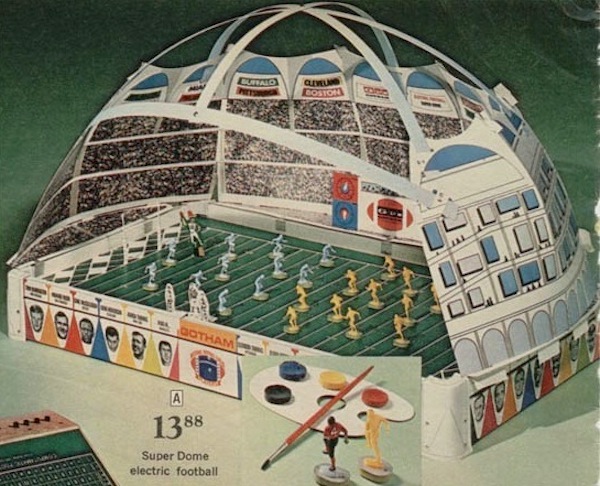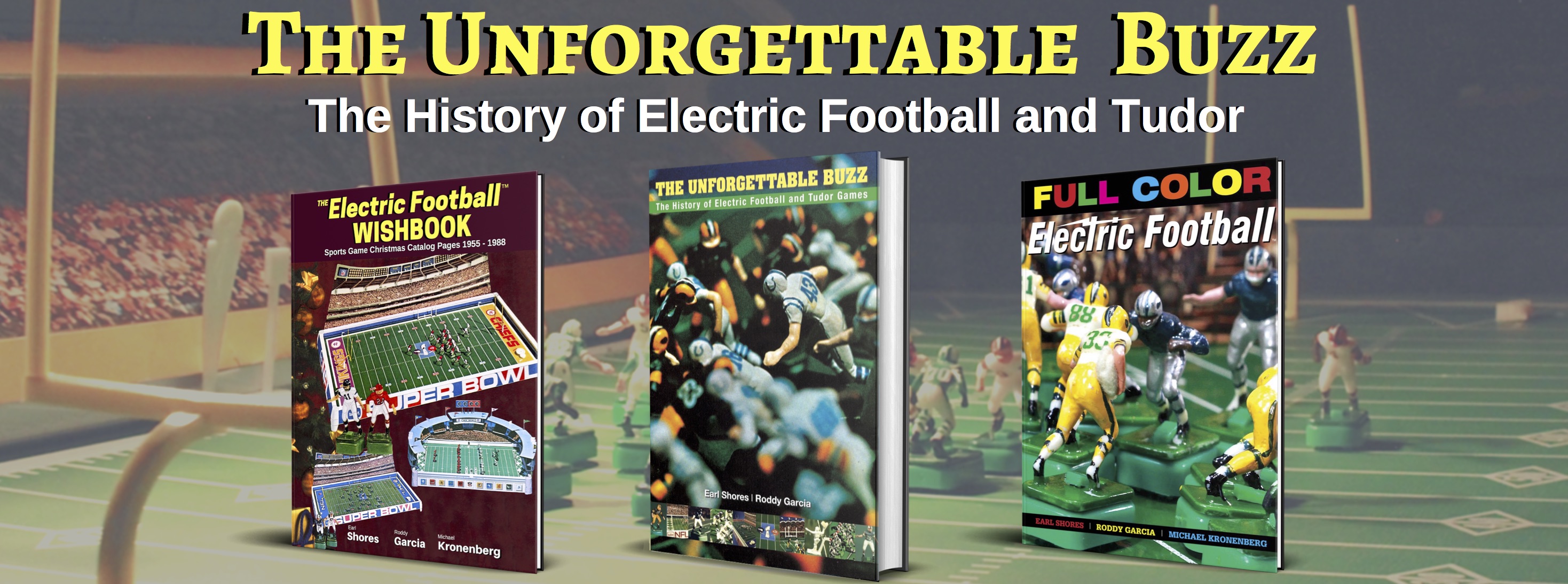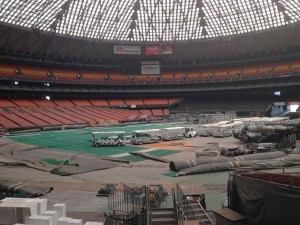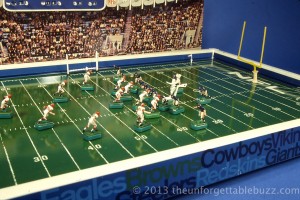
Gotham’s version of the Astrodome – the 1969 Electric Football Superdome. The real Superdome wouldn’t open until 1975.
Electric football and stadium architecture are very much intertwined. So that makes it especially hard to hear about the dilapidated state of the Houston Astrodome. How does a stadium go from being the “Eighth Wonder” to a step away from the wrecking ball…in such a short time? (“Short” being part our lifetime).
It’s amazing how many of the stadiums that were considered new “wonders” back when we were waiting for deliveries from Brooklyn are now just memories. Stadiums once named Fulton County, Shea, Three Rivers, Riverfront, Veterans, Schaffer, and Texas, are all gone.
And Miami, the city with the most storied Super Bowl history of all, couldn’t land the golden anniversary 50th Super Bowl because a stadium built in 1987 is viewed as “outdated.” Is this a case of planned obsolescence, or skybox revenue being the overriding influence in stadium planning?
Long before the advent of the skybox, Gotham was the company who pushed electric football stadium architecture to its most realistic point. They built some beautiful games, even if some of the stadiums were difficult to construct and play with. Unfortunately, Gotham’s field design wasn’t very robust. As a result, their games don’t age very well. There are few working examples left of the majestic stadium legacy that Gotham created.
We are fortunate that Lee Payne and Norman Sas didn’t go in for planned obsolescence. Most 1967 NFL No. 620 games will play just as well now as the day they were loaded on the truck in Brooklyn. The grandstands do age sometimes, but you can still clip it onto the game. Yes, it’s a time machine, but also a “classic.” It’s still an inviting game to sit down with.
No skyboxes necessary.
Earl & Roddy


